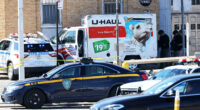Researchers at Fudan University in China have made a significant breakthrough in the field of superconductivity. Their discovery of a new high-temperature superconductor, announced on July 19, 2024, has the potential to revolutionize various technologies.
What are Superconductors?
Superconductors are materials that exhibit two remarkable properties under specific temperature conditions:
- Zero electrical resistance: Electricity can flow through a superconductor indefinitely without any energy loss.
- Perfect diamagnetism: Superconductors completely repel magnetic fields.
These properties hold immense potential for applications in power transmission, energy storage, medical imaging, magnetic levitation transportation, and quantum computing. However, the challenge has been achieving superconductivity at practical temperatures. Traditionally, superconductors only functioned at extremely low temperatures (often below -230°C), making them impractical for many applications.
A New Hope: High-Temperature Superconductor
The new material discovered by the Chinese team demonstrates superconductivity at a relatively high temperature. Key aspects of the discovery include:
- Material: The superconductor is a trilayer nickelate, representing a new class of materials with high-temperature superconductivity potential. (Previous high-temperature superconductors belonged to the cuprate family.)
- Superconducting Volume Fraction: The newly discovered material exhibits a superconducting volume fraction of 86%. This indicates a significant portion of the material demonstrates superconductivity when cooled.
- Temperature: While the exact transition temperature hasn’t been revealed yet, reports suggest it’s around 80 Kelvin (-193°C). This is a significant improvement over traditional superconductors but still requires cooling with liquid nitrogen.
Comparison of Superconductor Types
| Feature | Traditional Superconductors | New Nickelate Superconductor |
|---|---|---|
| Material Type | Various | Nickelate |
| Transition Temperature | Very low (often below -230°C) | Around 80 Kelvin (-193°C) |
| Superconducting Volume Fraction | Lower | 86% |
Potential Applications and Future Research
The discovery of this high-temperature superconductor opens doors to a range of potential applications:
- More efficient power transmission: Superconducting cables could significantly reduce energy loss during electricity transmission.
- Improved energy storage: Superconducting devices could store large amounts of energy with minimal loss.
- Advanced medical imaging: Superconducting magnets could lead to more powerful and precise MRI machines.
- Revolutionizing transportation: Magnetic levitation trains powered by superconductors could become a reality.
- Quantum computing breakthroughs: Superconducting circuits are crucial for building quantum computers.
Professor Zhao Jun, who led the research team, emphasizes the importance of further research. Understanding the mechanism behind this new material’s superconductivity could pave the way for even higher transition temperatures, bringing superconductivity closer to room temperature and enabling even more transformative applications.
This discovery by Chinese scientists is a significant step forward in the field of superconductivity. With continued research and development, this new material has the potential to revolutionize various technologies and shape the future of energy, transportation, and computing.
For more such technology related news, follow us GadgetGrapevine.com.








